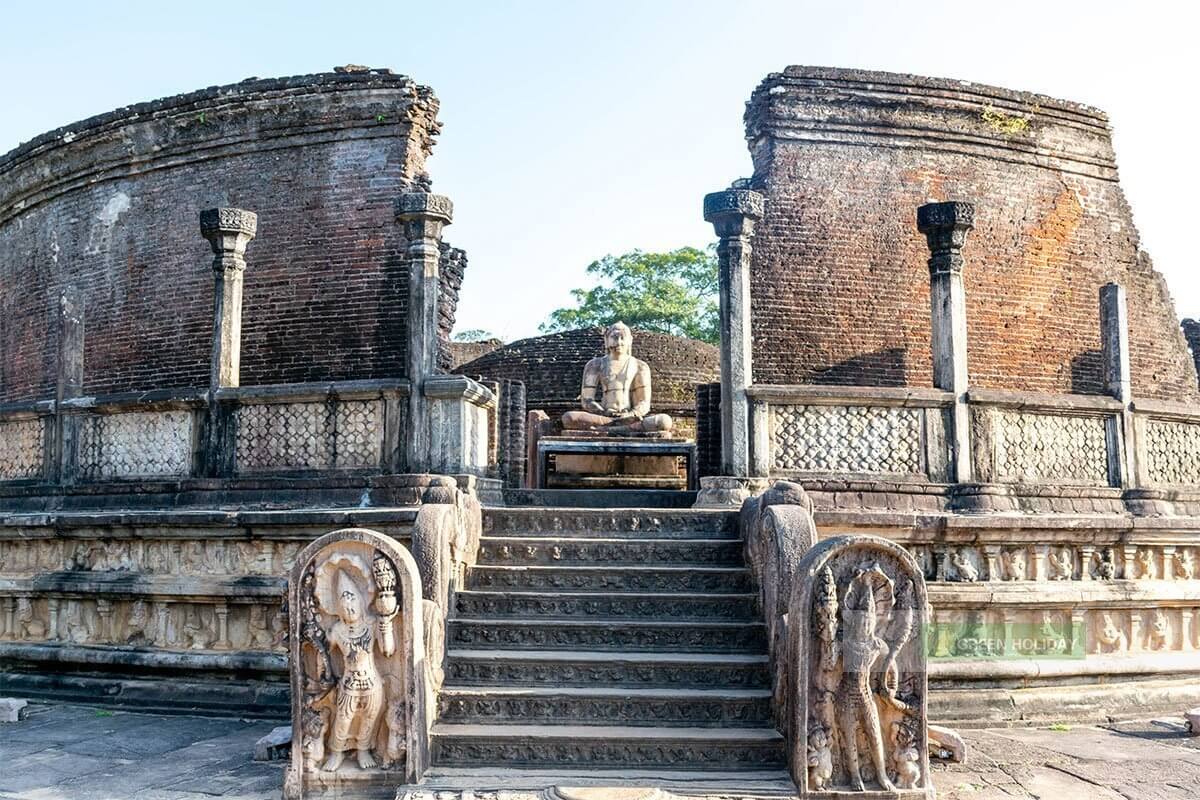The ancient city of Polonnaruwa in Sri Lanka is a treasure trove of archaeological wonders, and among its many gems, the Polonnaruwa Vatadage stands out as a true masterpiece. This circular relic shrine, built during the medieval period, is a testament to the architectural brilliance and religious significance of the era. In this comprehensive guide, we will delve into the profound significance, history, architectural marvels, and spiritual essence of the Polonnaruwa Vatadage, offering insights on how to make the most of your visit to this sacred site.
The Significance of the Polonnaruwa Vatadage
The Polonnaruwa Vatadage is a sacred structure that once enshrined the most revered relic in Buddhism, the sacred tooth of the Buddha. This circular relic shrine is a remarkable example of Sinhalese architecture from the Polonnaruwa period (11th to 13th centuries), during which this ancient city served as the royal capital of Sri Lanka.
The term “vatadage” translates to “round relic house,” reflecting the circular design of the shrine. While it served as a protective enclosure for the sacred relic, it also played a crucial role in preserving the religious and cultural heritage of the time.
Architectural Marvels
The Polonnaruwa Vatadage is a mesmerizing blend of intricate stonework and aesthetic design. It’s renowned for its architectural features, which include:
- Circular Design: The most striking feature of the vatadage is its circular design, a rare architectural style that was characteristic of this period in Sri Lanka.
- Guardstones and Moonstones: As you approach the shrine, you’ll encounter beautifully carved guardstones and moonstones, which were symbols of protection and prosperity. These stone carvings are a testament to the craftsmanship of the era.
- Circumambulatory Path: Surrounding the central stupa (dagoba), the shrine has a circumambulatory path for devotees to walk around, a common practice in Buddhist worship. Along the path, you’ll find intricately carved balustrades and stone columns.
- Four Entrances: The Polonnaruwa Vatadage has four entrances, each guarded by a pair of stone lions, adding to the grandeur of the shrine.
- Central Stupa: At the heart of the vatadage is a central stupa, which once held the sacred tooth relic. The stupa is richly adorned with intricate stone carvings and surrounded by a circle of small stupas.
Spiritual Essence
Visiting the Polonnaruwa Vatadage is not only an architectural exploration but also a spiritual journey that allows you to connect with the essence of Buddhism and the rich history of Sri Lanka. Here’s how to experience its spiritual significance:
- Circumambulation: Take a leisurely walk around the vatadage’s circumambulatory path, clockwise, as is the custom. As you do so, you’ll be following in the footsteps of countless devotees who have sought spiritual solace here.
- Offering Devotions: The Polonnaruwa Vatadage is a place of reverence, where visitors can light oil lamps, offer lotus flowers, and make offerings as acts of devotion.
- Contemplation: Find a quiet spot within the shrine and engage in silent contemplation, meditation, or prayer. The serene surroundings and historical significance make it an ideal place for introspection.
- Cultural Insights: The Polonnaruwa Vatadage offers insights into the cultural and religious heritage of Sri Lanka, allowing you to appreciate the evolution of Buddhism and its influence on the island.
Practical Information
Before embarking on your journey to the Polonnaruwa Vatadage, consider these practical details:
- Location: The Polonnaruwa Vatadage is situated in the ancient city of Polonnaruwa, in the North Central Province of Sri Lanka. It is easily accessible from major cities like Colombo and Kandy.
- Timing: The site is generally open year-round, and visiting during daylight hours is recommended to fully appreciate its historical and spiritual significance.
- Admission: Entry to the Polonnaruwa Vatadage is often free, although donations to support the maintenance of the site are appreciated.
- Dress Code: As a place of worship and cultural importance, it’s advisable to dress modestly, covering your shoulders and knees as a sign of respect.
- Footwear: Shoes are not allowed within the sacred precinct, so be prepared to remove them before entering certain areas.
- Guided Tours: Consider hiring a local guide who can provide valuable insights into the history, architecture, and spiritual significance of the Polonnaruwa Vatadage.
Conclusion
The Polonnaruwa Vatadage is a remarkable testament to the architectural prowess and spiritual devotion of ancient Sri Lanka. A visit to this sacred site offers a profound journey into the heart of Buddhism and the cultural richness of the island.
Whether you are an architecture enthusiast, a spiritual seeker, or a traveler eager to explore the wonders of history, the Polonnaruwa Vatadage promises a captivating experience. It will not only leave you in awe of its architectural splendor but also deepen your understanding of the spiritual and cultural heritage of Sri Lanka, making your visit a truly enriching and enlightening one.
